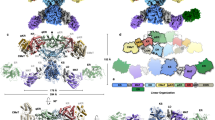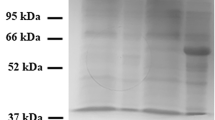Abstract
In aqueous solutions, dalvastatin (1) undergoes epimerization as well as hydrolysis. The transformation of the drug was studied as a function of pH at 25°C in aqueous solutions containing 20% acetonitrile. At all pH values, first-order plots for the conversion are biphasic, indicating rapid equilibration of 1 with its epimer (2) and slower hydrolysis of 1 to the corresponding β-hydroxy acid (3). Apparent first-order rate constants for the biexponential equation are given as a function of pH. The alkyl–oxygen cleavage of the lactone ring results in the epimerization of 1 to 2, whereas the acyl–oxygen cleavage results in the hydrolysis of 1 to 3. The epimerization is an SN1 reaction reaching an equilibrium of [l] eq/[2] eq = 1.27. The epimerization rate is increased with an increase in the water content of the solvent. The hydrolysis of 1 to 3 is acid and base catalyzed. The hydrolysis is reversible in acidic media and irreversible in neutral and basic media. At pH values greater than 9, the hydrolysis reaction proceeds more rapidly than the epimerization.
Similar content being viewed by others
REFERENCES
D. Amin, S. Gustafson, J. Weinacht, S. Cornell, K. Neuenschwander, B. Kosmider, A. Scotese, J. Regan, and M. Perrone. RG 12561, a novel, synthetic inhibitor of HMG CoA reductase and hypocholesterolemic agent that achieves high drug liver/plasma ratio. Arteriosclerosis 10:828a (1990).
D. Amin and K. Neuenschwander. Dalvastatin. Drugs Fut. 17:377–379 (1992).
S. M. Grundy. HMG-CoA reductase inhibitors for treatment of hypercholesterolemia. N. Engl. J. Med. 319:24–33 (1988).
V. K. Khetarpal, L. S. Storbeck, D. Wells, and R. H. Meacham. Method for separation and determination of lactone and hydroxy acid forms of a new HMG CoA reductase inhibitor (RG 12561) in plasma. J. Chromatogr. 567:491–497 (1991).
A. A. Frost and R. G. Pearson. Kinetics and Mechanism, Wiley, New York, 1961, pp. 162–164.
E. S. Gould. Mechanism and Structure in Organic Chemistry, Holt, Rinehart and Winston, New York, 1962, p. 316.
E. R. Garrett and C. M. Won. Prediction of stability in pharmaceutical preparations. XVI. Kinetics of hydrolysis of canrenone and lactonization of canrenoic acid. J. Pharm. Sci. 60:1801–1809 (1971).
M. J. Kaufman. Rate and equilibrium constants for acid-catalyzed lactone hydrolysis of HMG-CoA reductase inhibitors. Int. J. Pharm. 66:97–106 (1990).
Author information
Authors and Affiliations
Rights and permissions
About this article
Cite this article
Won, C.M. Epimerization and Hydrolysis of Dalvastatin, a New Hydroxymethylglutaryl Coenzyme A (HMG-CoA) Reductase Inhibitor. Pharm Res 11, 165–170 (1994). https://doi.org/10.1023/A:1018978602141
Issue Date:
DOI: https://doi.org/10.1023/A:1018978602141




